Let all things be done decently and in order.
1 Corinthians 14:40 (WEB)
Create Bootable Media, a DVD, SD Card or USB Key from which to run live and / or install C4C Ubuntu
Note that our ISO is over 4GB – the single file size limit of the FAT32 file format. If not using a GUI app that automatically takes care of this for you (like the ones shown in the tutorials below); SD Cards and USB Keys should be formatted as exFAT.
A Bootable DVD will run on computers with a DVD reader. You’ll need a DVD writer (burner) and a way to properly write the ISO. The following tutorial features Xfburn on Linux but there are several options for Linux, MacOS X and Windows. Skip to the end of this section to see more.
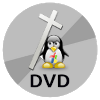
Open Xfburn and click the [Burn Image] button or go to Action > Burn Image
![The [Burn Image] button in Xfburn](https://computers4christians.org/wp-content/uploads/2022/07/Xfburn-01.png)
Click the drop-down menu under Image to burn

Navigate to the C4C Ubuntu ISO and double-click
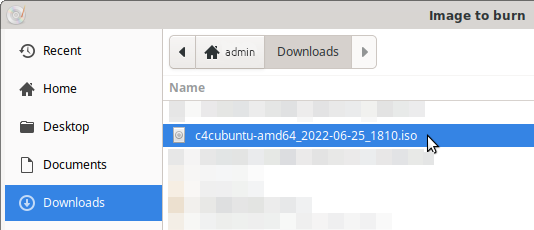
Insert a blank DVD and click [Burn image]
![click the [Burn image] button](https://computers4christians.org/wp-content/uploads/2022/07/Xfburn-04.png)
Xfburn will show a progress bar…
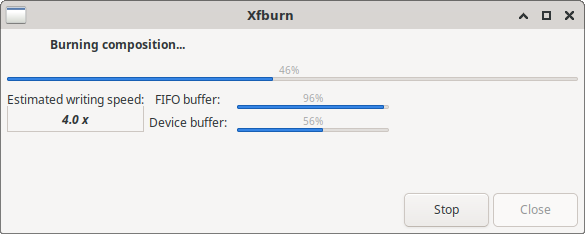
and will alert you when it’s done

You’re ready to run live and / or install C4C Ubuntu 22.04
Other ISO to DVD Information ![]() Command line instructions from HowtoForge and Xmodulo or GUI apps AcetoneISO, GnomeBaker and this LinuxConfig article about using Brasero.
Command line instructions from HowtoForge and Xmodulo or GUI apps AcetoneISO, GnomeBaker and this LinuxConfig article about using Brasero. ![]() Command line instructions at SullysRants, or Finder, Disk Utility and command line instructions at Online Tech Tips. Also see the GUI application Burn.
Command line instructions at SullysRants, or Finder, Disk Utility and command line instructions at Online Tech Tips. Also see the GUI application Burn. ![]() Command line instructions from Into Windows and Winaero. Read GUI how-tos from How-To Geek and Lifewire. Also see the BurningIsoHowTo in the Ubuntu Community Help Wiki.
Command line instructions from Into Windows and Winaero. Read GUI how-tos from How-To Geek and Lifewire. Also see the BurningIsoHowTo in the Ubuntu Community Help Wiki.
A Bootable SD Card will run on computers with an SD Card port. You’ll need an SD Card with at least a 4.6GB capacity. This tutorial features the cross-platform Rasberry Pi Imager (which works with USB Keys too), but there are several options. Skip to the end of this section to see more.

Open Raspberry Pi Imager and click the [CHOOSE OS] button
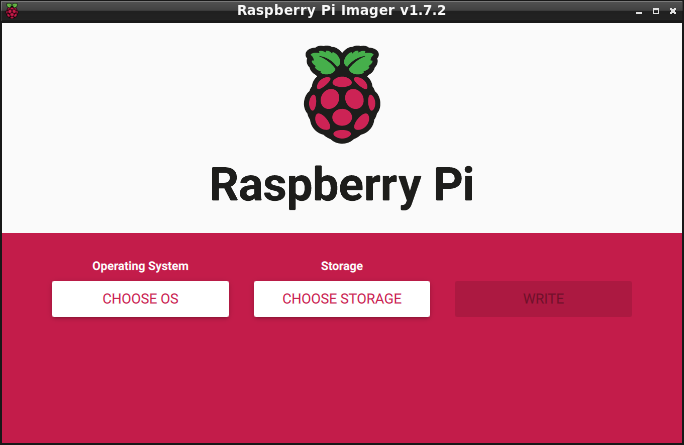
Scroll to the bottom and choose Use custom

Navigate to the C4C Ubuntu ISO

Insert an SD Card and click the [CHOOSE STORAGE] button

Choose your SD Card then click the [Write] button. The Raspberry Pi Imager will show a progress bar while it writes the ISO…

and another progress bar while it verifies
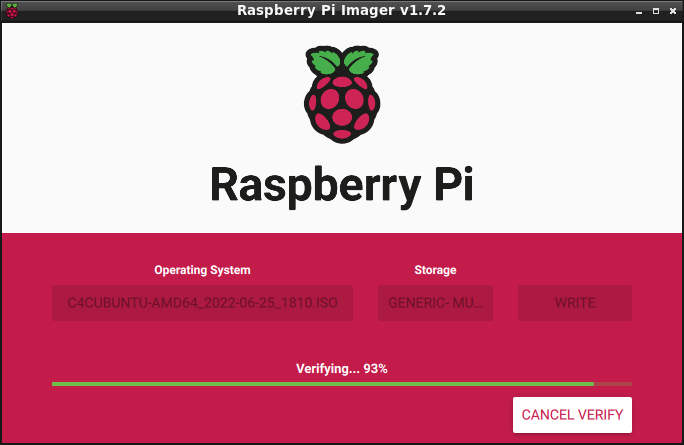
You’ll be alerted when the operation is complete

You’re ready to run live and / or install C4C Ubuntu 22.04
Other ISO to SD Card Information ![]()
![]() How to Write Image Files to SD Card with dd from Command Line of Mac or Linux from OSX Daily and dd Utility – Write and Backup Operating System IMG and ISO files on Memory Card or Disk from The Fan Club.
How to Write Image Files to SD Card with dd from Command Line of Mac or Linux from OSX Daily and dd Utility – Write and Backup Operating System IMG and ISO files on Memory Card or Disk from The Fan Club. ![]() GUI apps Disks and GNOME MultiWriter and read Install Etcher on Ubuntu to Burn Images – SD Cards And USB on Linux Hint.
GUI apps Disks and GNOME MultiWriter and read Install Etcher on Ubuntu to Burn Images – SD Cards And USB on Linux Hint. ![]()
![]()
![]() Create installation media for Ubuntu from Canonical, Flashing OS images to memory cards easily with balenaEtcher from Linux Kamarada, SD Cards and Writing Images from SparkFun Electronics and see the GUI app USBImager.
Create installation media for Ubuntu from Canonical, Flashing OS images to memory cards easily with balenaEtcher from Linux Kamarada, SD Cards and Writing Images from SparkFun Electronics and see the GUI app USBImager. ![]() imgFlasher, Rufus, SD Imager, USB Image Tool and WinDiskFlash.
imgFlasher, Rufus, SD Imager, USB Image Tool and WinDiskFlash.
A Bootable USB Key will run on computers with a USB port. You’ll need a USB key with at least a 4.6GB capacity. The following tutorial shows the cross-platform Etcher (which works with SD Cards too) but there are several options. Skip to the end of this section to see more.

Open Etcher and click the [Flash from file] button
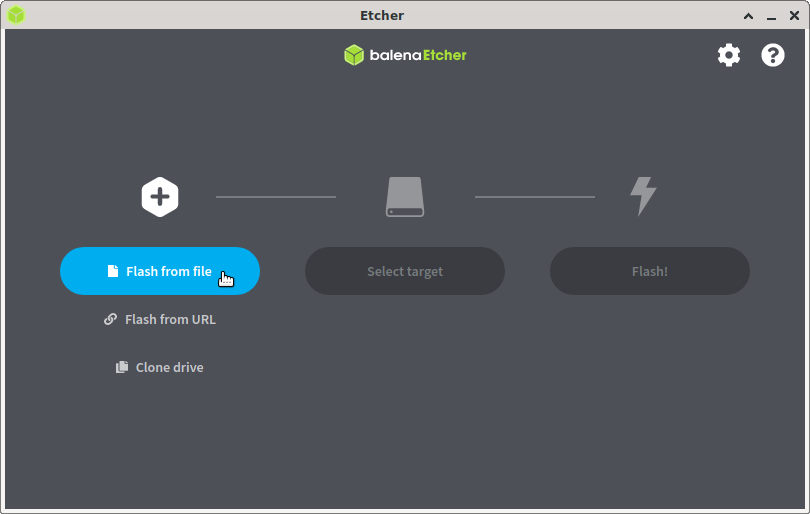
Navigate to the C4C Ubuntu ISO

Insert a USB Key and click the [Select target] button
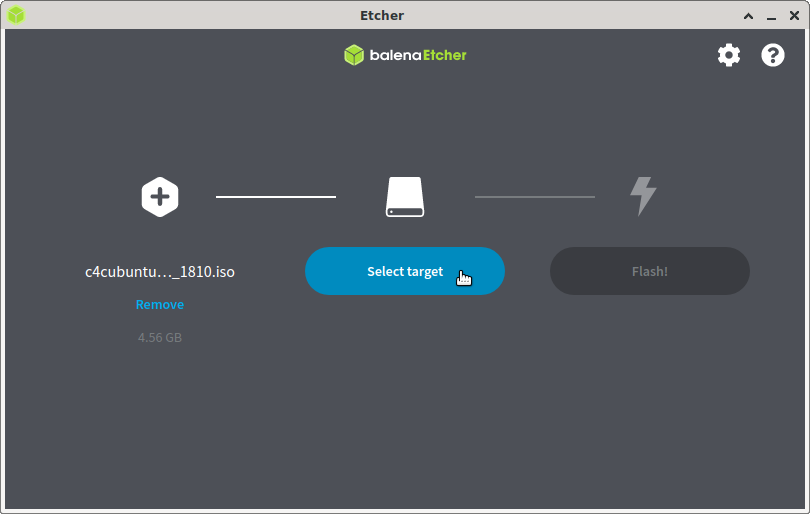
Check the check box next to your USB Key then click the [Select] button
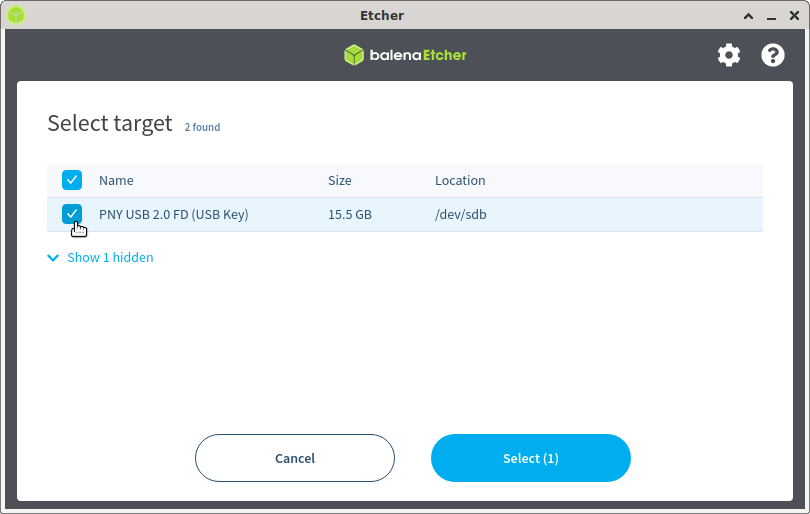
Click the [Flash!] button
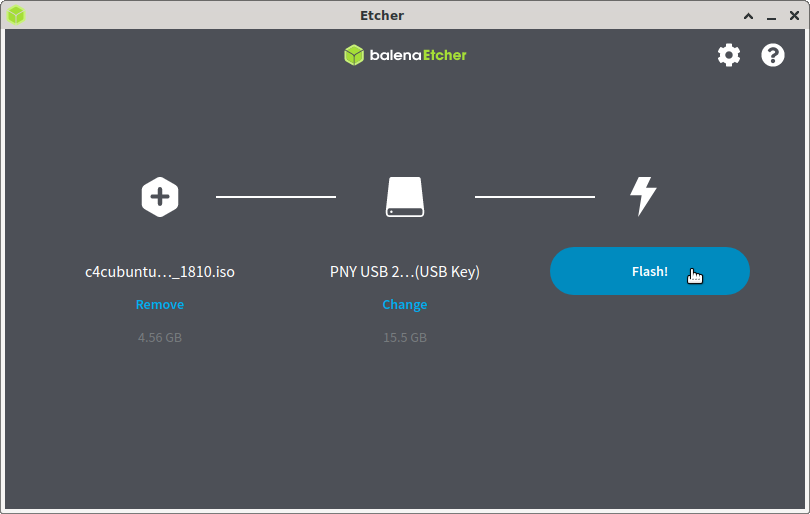
Provide your Password/Passphrase and click the [Authenticate] button
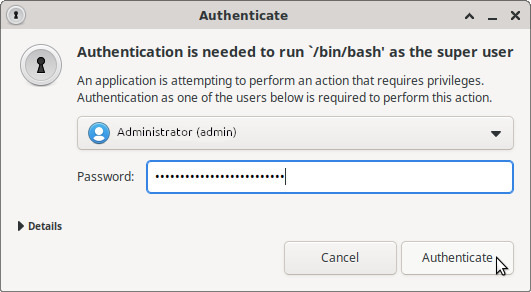
Etcher shows a progress bar as well as advertisements
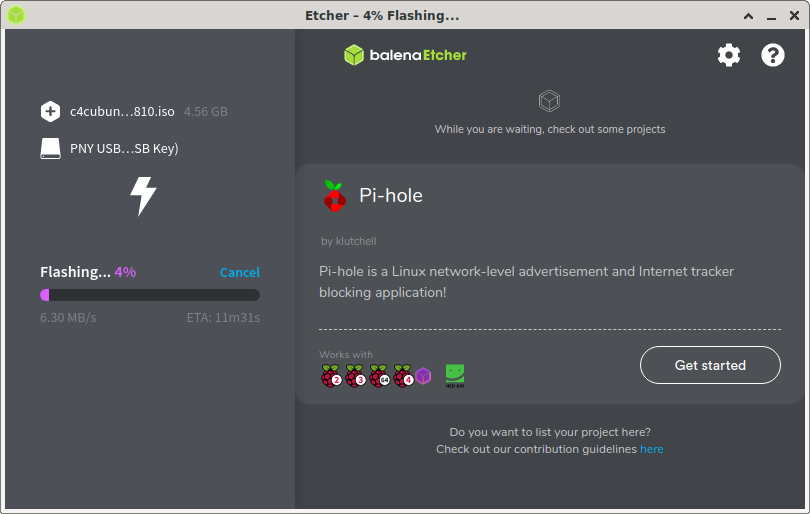
Etcher alerts you when the operation is complete

You’re ready to run live and / or install C4C Ubuntu 22.04
Other ISO to USB Key Information ![]()
![]() See Ventoy.
See Ventoy. ![]() Command line instructions at linuxwebdevelopment.com and PolarSPARC. How-Tos from LinOxide, linuxiac, PragmaticLinux, Simplified Guide and How-To Geek.
Command line instructions at linuxwebdevelopment.com and PolarSPARC. How-Tos from LinOxide, linuxiac, PragmaticLinux, Simplified Guide and How-To Geek. ![]() Command line: Everest 2020 and mariuszczyz.com. How-Tos: GetWox, How-To Geek and Mac O’Clock.
Command line: Everest 2020 and mariuszczyz.com. How-Tos: GetWox, How-To Geek and Mac O’Clock. ![]() How-Tos: Micro Center, Computing for Geeks, and Linuxize. Also see Rufus.
How-Tos: Micro Center, Computing for Geeks, and Linuxize. Also see Rufus.


